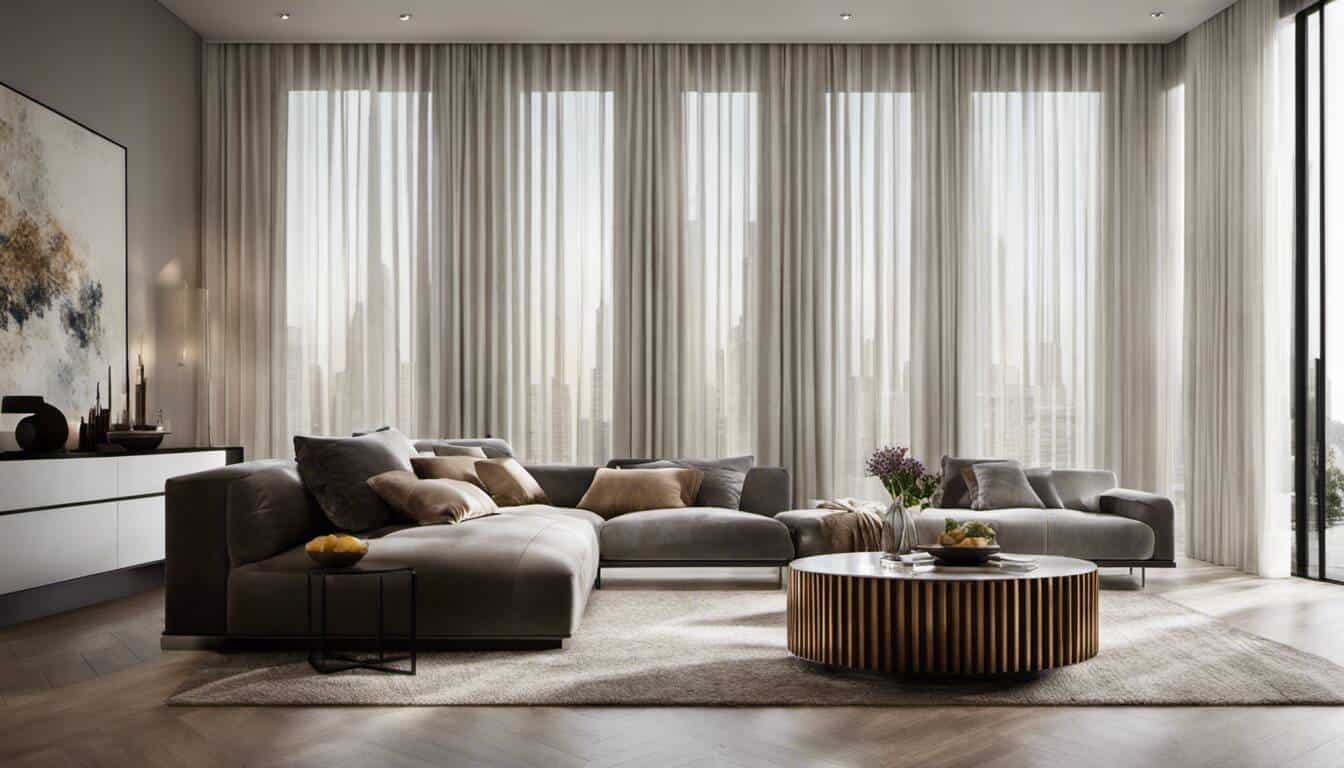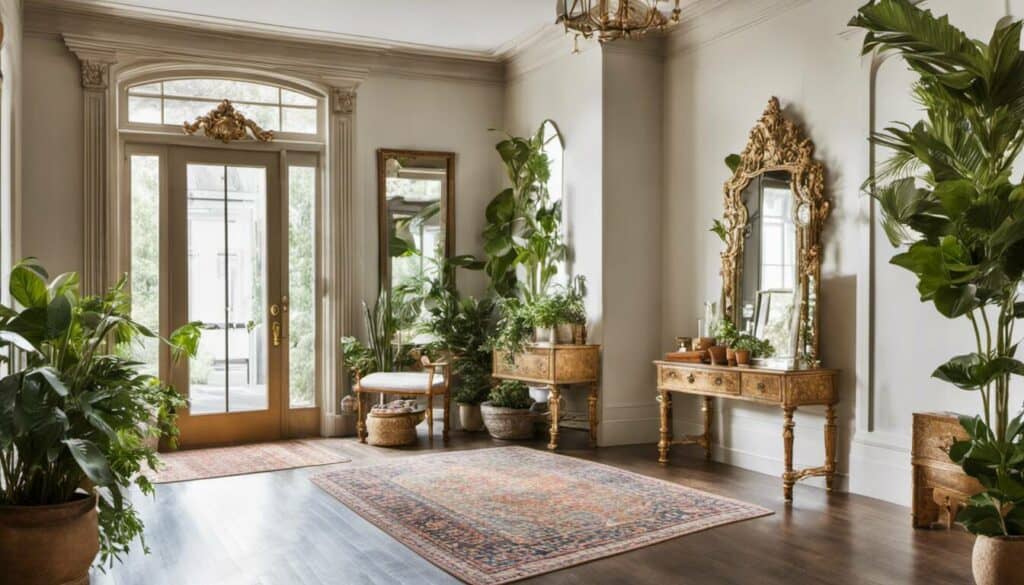In my quest to spruce up my home’s windows, I found myself weighing the pros and cons of blinds versus curtains. It wasn’t just about aesthetics; functionality played a crucial role too, in fact, for me, it played more of a role! How did I tackle this decision? I share my insights below. I break down the options, ensuring you’re equipped to enhance both the style and practicality of your space. Let’s dive right into it played more of a role! How did I tackle this decision? I share my insights below. I break down the options, ensuring you’re equipped to enhance both the style and practicality of your space. Let’s dive right into it!
When deciding between blinds and curtains, consider factors such as personal preference, budget, the needs of the room (such as if you need to block out light or noise), and ease of maintenance. Blinds may be more budget-friendly and versatile in terms of light control, but curtains come in a variety of designs and fabrics, can better block out light and sound, and can provide insulation benefits. Ultimately, the decision comes down to personal taste and what will work best for your specific situation.

“While blinds and curtains each have their unique characteristics and advantages, the choice ultimately depends on your specific needs and style preferences. As a seasoned interior designer, I recommend considering factors like light control, privacy, maintenance, and of course, the overall aesthetic of your home before making a decision. Make your choice a reflection of not just your home, but your personality as well.”
Josiah Oglethorpe, Senior Interior Designer
Choosing Between Blinds and Curtains
When it comes to choosing between blinds and curtains, there is no one-size-fits-all answer. It ultimately boils down to personal preference, the style of the room, and the specific needs of your windows. Both blinds and curtains have their own unique features and advantages that can enhance the aesthetics and functionality of your space. By understanding these aspects, you can make an informed decision.
Let’s consider a scenario where you have a rental property with multiple windows that receive direct sunlight throughout the day. In this case, you might opt for blinds that are effective at blocking out light, offering privacy, and reducing heat. On the other hand, if you prefer a softer and more elegant look for your living room, curtains could be the ideal choice as they add warmth and texture to the space.
- When deciding between blinds and curtains, it is important to consider personal preference, room style, and specific window needs. Each option has unique advantages that can benefit the aesthetics and functionality of a space. For example, if you have a rental property with windows that receive direct sunlight, blinds may be the best option for blocking light and reducing heat. However, if you want to add warmth and texture to a living room, curtains could be the ideal choice. Ultimately, understanding these factors can help make an informed decision.
Factors to Determine Your Choice
To narrow down your choices between blinds and curtains, several factors need careful consideration.
One crucial aspect is light control. Do you want to completely block out sunlight or allow some natural light to filter through? Blinds offer precise control over light levels with adjustable slats, while curtains provide varying degrees of light filtration depending on their fabric thickness.
Another factor is privacy. Consider whether you need full privacy or if maintaining visibility while reducing glare is acceptable. Blinds can easily be adjusted to balance both privacy and natural light, while curtains may require additional layers such as sheer or blackout liners for enhanced privacy.
Additionally, style plays a significant role in creating the desired ambiance in your space. Curtains are available in a wide range of fabrics, patterns, and colors, allowing for more customization options to match your interior design scheme. Blinds also come in various materials like wood, aluminum, or fabric that can complement different decor styles.
Lastly, don’t forget practical aspects such as maintenance and durability. Blinds are generally easier to clean, requiring just a quick wipe with a cloth or duster. On the other hand, curtains may need occasional washing or dry cleaning, depending on the fabric. Consider factors like durability and longevity when making your decision.
By carefully considering factors such as light control, privacy, style, and maintenance, you can make an informed choice between blinds and curtains that best suits your needs and preferences.
Benefits and Drawbacks of Blinds
Blinds offer a versatile window covering option that comes with its own set of benefits and drawbacks. Let’s explore these to better understand the pros and cons of using blinds in your home.
Benefits of Blinds: One of the main advantages of blinds is their practicality and ease of use. They provide precise light control, allowing you to adjust the amount of sunlight entering your space with ease. This can be particularly useful in rooms where direct sunlight may cause glare on screens or damage furniture and artwork.
For instance, imagine having a home office with a large window that brings in plenty of natural light. Blinds would give you the flexibility to tilt the slats and filter the brightness, ensuring optimal lighting conditions for work while still enjoying the view outside. This setup can also complement your living room plant arrangement, creating a cohesive indoor-outdoor feel.
Additionally, blinds are known for their clean and minimalistic appearance. They come in various materials such as wood, aluminum, or PVC, allowing you to choose a style that complements your interior design seamlessly.
However, it’s important to consider some drawbacks associated with blinds as well.
Drawbacks of Blinds: One common concern is that blinds can collect dust easily, requiring frequent cleaning to maintain their pristine appearance. Moreover, certain types of blinds, like vertical blinds with hanging vanes, can be prone to tangling or becoming misaligned over time if not properly maintained.
Another drawback is that blinds may not completely block out light when fully closed, resulting in some light leakage around the edges. This could potentially be an issue for individuals sensitive to light or those who prefer complete darkness for sleep or movie-watching sessions.
While blinds offer functionality and an aesthetically pleasing look, considering these drawbacks will help you make an informed decision about whether they are the right choice for your windows.
Practical Applications and Concerns with Blinds
When considering blinds for your windows, it’s important to think about their practical applications and potential concerns. Let’s delve into these aspects to further assess their suitability.
Practical Applications: Blinds are versatile and can be used in various rooms throughout your home or office. They are particularly well-suited for areas where privacy needs to be easily controlled, such as bathrooms or ground-level windows facing busy streets.
For example, if you have a bathroom window overlooking a neighbor’s property, blinds would provide the flexibility to adjust the angle of the slats for privacy while still allowing natural light to filter in.
Blinds also work well in spaces where you want to maintain an unobstructed view when they are fully open. Their ability to stack neatly at the top of the window provides an unhindered view of outside scenery.
However, it’s important to consider certain concerns when using blinds.
Concerns with Blinds: One common concern is that blinds can make noise when wind blows through open windows or doors, causing them to sway or rattle. This factor may be more prominent in areas with strong winds or if your windows are frequently left open.
Another consideration is that some types of blinds, like horizontal mini-blinds or Venetian blinds with multiple slats, can accumulate dust quickly. Regular cleaning and maintenance are necessary to prevent allergens from building up and ensure their longevity.
By carefully considering the practical applications and potential concerns associated with blinds, you can determine whether they align with your preferences and requirements for window coverings.
Advantages and Disadvantages of Curtains
Curtains have long been a popular choice for window treatments, offering both functional and aesthetic benefits. Let’s take a closer look at the advantages and disadvantages of curtains to help you make an informed decision for your windows.
Curtains offer versatility in design, with a wide range of fabrics, patterns, and colors to choose from, allowing you to customize your space according to your taste and preferences. They also provide excellent light control, allowing you to adjust the amount of natural light entering the room. Moreover, curtains can enhance privacy when fully drawn.
On the downside, curtains can require more maintenance compared to blinds as they collect dust easily and need regular cleaning. Additionally, if not properly cared for, curtains can be prone to mold and dampness, particularly in high-humidity environments. However, these disadvantages can be mitigated through proper care and maintenance.
Practical Use and Issues with Curtains
When considering curtains for your windows, it is important to evaluate their practical use and potential issues that may arise. Curtains are particularly well-suited for bedrooms where light-blocking and noise reduction are desired. The heavy fabric of curtains helps to create a cozy ambiance by absorbing sound effectively.
One practical consideration with curtains is ensuring they go all the way down to the floor and are mounted above the window frame. This not only gives an illusion of height to the room but also ensures maximum coverage when the curtains are closed. It’s important to avoid certain wall colors that might clash with your curtain choice and disrupt the room’s harmony.
However, it’s important to note that curtains can be more expensive compared to blinds, especially if you opt for high-quality fabrics. Furthermore, if your windows are located near areas with high wind exposure or if you frequently open doors or windows, curtains can be quite irritating as they tend to flap around due to air movement.
To summarize, while curtains offer various advantages such as customization options and light control, they also come with some considerations such as maintenance requirements and potential issues with wind. Ultimately, it’s essential to weigh these factors against your personal preferences and the specific needs of each room.
- According to Energy.gov, curtains can reduce heat gains by 33% and heat loss by up to 10%, making them more energy efficient than blinds.
- A study in the Journal of Interior Design found that 52% of homeowners prefer curtains to blinds due to their style and ability to block out light more effectively.
- According to the National Association of Realtors, high-quality window treatments can increase a home’s resale value by as much as 2%-3%. Both blinds and curtains have been proven effective in this respect, but it depends on the overall decor and style of the home.
Harmonizing Blinds and Curtains for Home Decor
When it comes to home decor, combining blinds and curtains can create a harmonious and visually appealing look for your windows. By strategically pairing these two window treatments, you can benefit from the practicality of blinds while adding warmth and elegance with curtains.
One popular approach is to use blinds as the primary window covering for privacy, light control, and ease of maintenance. Blinds come in various types such as vertical, horizontal, or Roman blinds, each offering its own unique style and functionality. They provide a clean and minimalistic appearance that suits modern and contemporary interiors.
For instance, in a sleek and minimalist living room with large floor-to-ceiling windows, a set of white horizontal blinds can lend a sense of openness while allowing ample natural light to filter through during the day. The clean lines and simple design add a touch of sophistication to the space.
To soften this more utilitarian look and infuse some texture and color into the room, curtains can be added as decorative accents. Curtains offer an extensive selection of designs, patterns, and fabric types that can instantly transform the atmosphere of a room. From sheer fabrics that create an airy and ethereal ambiance to thick drapes that evoke a cozy and intimate feel, curtains provide endless possibilities for customization.
Continuing with the example above, complementing those white horizontal blinds with floor-length curtains in earthy tones like beige or taupe can introduce warmth and create visual interest. The curtains can be chosen in a fabric that adds texture or features a subtle pattern to add depth to the overall design.
When harmonizing blinds and curtains for home decor, it’s important to consider both their practical functions as well as their aesthetic contribution to your space.
In terms of functionality, having both blinds and curtains allows for greater flexibility in controlling light and privacy. During the day, you can adjust the blinds to control the amount of light entering your room while maintaining privacy. In the evenings, drawing the curtains closed can provide an additional layer of insulation and darkness for a better sleep.
Picture a bedroom where delicate sheer curtains hang behind blackout roller blinds. During the day, the sheer curtains softly filter natural light, creating a serene and tranquil ambiance. At night, pulling the blackout roller blinds down ensures complete darkness for a peaceful sleep without any disturbances from street lights or early morning sunlight.
Additionally, the combination of blinds and curtains adds visual depth and dimension to your windows. The layers created by pairing these window treatments create a sense of luxury and sophistication in your home decor.
Whether you prefer a modern, minimalist look or a more traditional and layered design, harmonizing blinds and curtains can help you achieve both functionality and style. By carefully selecting complementary colors, textures, and patterns, you can create a cohesive and visually stunning window treatment that enhances the overall aesthetic of your space. Consider applying Feng Shui principles to further optimize the energy flow in your room when deciding on your window treatments.





In my professional experience, blinds create a more streamlined, modern look with added durability. Curtains, on the other hand, are best for adding a softness to a room due to their draping effect.
In my dining room, I’ve employed a combination of blinds inside for light control and layered curtains outside for that vintage vibe – works like charm!
True, Zelda Drummond, Using blinds inside can indeed create a modern and chic look, whereas layering curtains outside can add an element of vintage charm, but it’s essential to ensure that both are cohesive with the overall design style of your space.
When I worked on my first professional project, I was stuck between choosing blinds or curtains for a loft-style apartment. After much consideration, I opted for sleek wooden blinds to create a streamlined look and ensure enough privacy during day time.
In my experience, choice between blinds or curtains largely depends on the window’s size and intended room ambiance. For instance, I once chose light-dimming velvet curtains for my study to provide a rich look while cutting off distractions from outside.